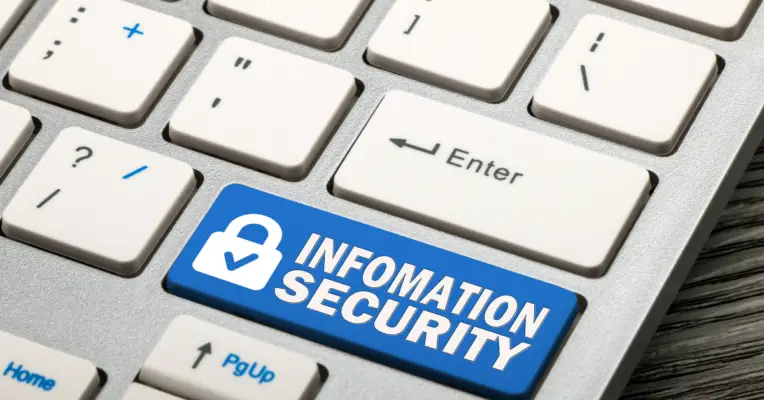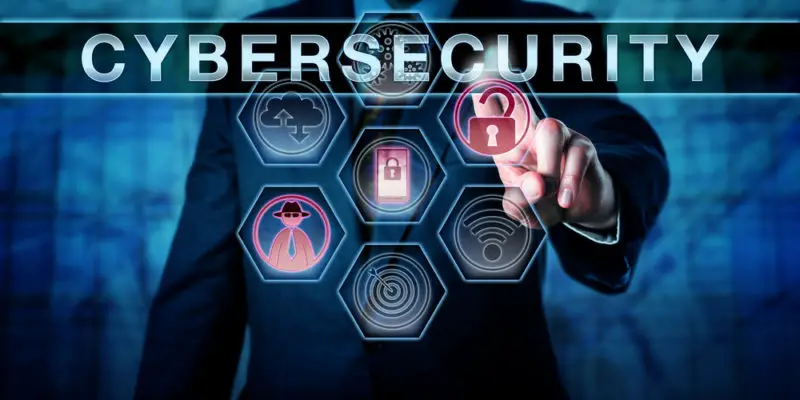Information risk management (IRM) refers to identifying, assessing, and reducing risks associated with storing, transmitting, and using information. It’s a critical component of a broader enterprise risk management strategy.
IRM is essential because organizations rely heavily on information for their operations, and any compromise in the availability, integrity, or confidentiality of this information can lead to severe consequences, including financial losses, damage to reputation, legal penalties, and operational disruptions.
The following steps are usually involved in an information risk management process:
Risk Identification: Identifying potential threats and vulnerabilities that could compromise information assets.
Risk Assessment: Evaluating the identified risks in terms of their likelihood and the potential impact on the organization. This step involves understanding the value of the information at risk and the potential consequences of a security breach.
Risk Mitigation: Developing and implementing strategies to manage the risks. Depending on their nature and severity, this may involve avoiding, reducing, transferring, or accepting risks.
Strategies can include deploying security technology (like firewalls or encryption), enforcing security policies and procedures, providing employee training, and purchasing insurance.
Risk Monitoring and Review: Continually monitoring the risk environment to detect any changes and review the effectiveness of the risk management strategies. The risk management plan should be updated as necessary.
Communication and Documentation: Communicating the risks and risk management strategies to relevant stakeholders and documenting the entire risk management process for accountability and future reference.
Different methods and frameworks can be used for information risk management, including ISO 27005 (an international standard for information security risk management), OCTAVE (Operationally Critical Threat, Asset, and Vulnerability Evaluation), and NIST’s Risk Management Framework.
Moreover, as the regulatory environment regarding data protection has grown stricter in recent years (with regulations like GDPR in the EU and CCPA in California, USA), a key part of information risk management also involves ensuring compliance with relevant laws and regulations.
The importance of information risk management cannot be overstated, as data breaches can have severe consequences for organizations, including financial loss, reputational damage, and legal liabilities.
To understand information risk management better, it is essential to categorize the four main areas it addresses:
- Threats and vulnerabilities: refer to anything that may harm an organization’s assets or operations, while vulnerabilities represent weaknesses that threat actors may exploit to gain access to these assets.
- Risk assessment: involves analyzing the likelihood of threats exploiting vulnerabilities in an organization’s systems or processes.
- Tools and resources: are necessary for managing information security risks effectively.
- Continuous improvement: ensures that the organization remains vigilant against emerging threats.
Adopting robust information risk management practices based on these categories, companies can reduce their exposure to cybersecurity risks and safeguard their critical assets from unauthorized access or disclosure.

The Basics
Information risk management is a necessary process that involves identifying and limiting damage from incidents compromising data confidentiality, integrity, and availability. This can be achieved by combining policies, procedures, technology, and external monitoring to reduce threats from vulnerabilities or poor data security.
The information risk management process includes risk identification, which involves recognizing potential risks and their impacts on organizational operations. Risk mitigation is another critical component of information risk management.
It involves implementing measures to reduce or eliminate identified risks by establishing security policies and procedures to protect organizational assets from unauthorized access or compromise.
Incident response is also an important part of information risk management as it involves defining protocols for responding to security incidents such as cyber-attacks or data breaches. Employee education is another vital aspect of information risk management as it helps organizations avoid human error-related risks such as phishing attacks.
Organizations can reduce the likelihood of employee-caused security incidents by continually educating employees on cybersecurity best practices like password hygiene and safe internet usage habits.
Implementing a comprehensive information risk management strategy enables organizations to protect sensitive data while ensuring business continuity in today’s digital landscape.
Threats and Vulnerabilities
Identifying and addressing potential security threats, including cyber attacks, negligent employees, and residual risks, is critical to protecting valuable data.
Internal threats can come from employees who have access to sensitive information or systems but abuse that privilege. Organizations need to have appropriate policies to monitor employee activity and limit access to only those who need it.
Third-party risks also pose a significant threat to an organization’s data security. This can include vendors with inadequate security measures or supply chain attacks where attackers compromise a third-party vendor’s systems to gain access to an organization’s network.
Vulnerability management is essential in mitigating these risks by regularly identifying and patching vulnerabilities before they can be exploited.
Information asset value must also be considered when assessing potential security threats. Information that holds high value, such as intellectual property or personally identifiable information (PII), requires extra protection.
Risk Assessment
Assessing potential security threats involves evaluating various scenarios’ likelihood and potential impact, allowing organizations to prioritize their risk mitigation efforts. This is done through a series of steps, including risk identification, analysis, evaluation, treatment, and monitoring.
Risk identification involves identifying all possible threats that could harm an organization’s assets or operations. This includes internal and external threats, such as cyber-attacks from hackers or malware infections from third-party software.
Once the risks have been identified, they are analyzed by considering the likelihood of occurrence and potential impact on the organization. The next step is risk evaluation which involves determining the level of risk posed by each identified threat.
The risks can be evaluated using a quantitative or qualitative approach based on their likelihood and impact. After this evaluation, organizations can develop plans for treating risks by implementing controls to reduce their likelihood or mitigate their impact if they occur.
It is important to continuously monitor these risks to ensure they remain under control and do not harm the organization’s operations or reputation.
Tools and Resources
Tools and resources are essential for organizations to assess and mitigate potential security threats effectively, ultimately reducing the likelihood of devastating cyber attacks that can harm business operations and reputation.
One such tool is the vsRisk assessment tool, which simplifies the risk assessment process by identifying and assessing risks that are a combination of vulnerabilities and threats. This tool generates audit reports, ensuring repeatability and accuracy in the risk assessment.
Another valuable resource for organizations is cybersecurity software, which includes intrusion detection, antivirus software, two-factor authentication processes, firewalls, continuous security monitoring of data exposures and leaked credentials, and third-party vendor security questionnaires.
Attack surface analytics tools can quickly discover the location of digital assets and associated cyber risks. BitSight Technologies provides several cybersecurity solutions to help mitigate supply chain risk by measuring, verifying, and continuously monitoring vendors’ security postures.
Human-centric design is becoming increasingly crucial in cybersecurity programs since human failure will be responsible for over half of significant cyber incidents by 2025.
The Gartner report predicts that the cybersecurity industry will focus on addressing human error in 2023. Organizations can strengthen their overall cybersecurity posture by incorporating a human-centric design approach into their programs with effective training programs that educate employees on avoiding poor security practices.
In summary, various tools and resources are available to help organizations manage information risk effectively. These include the vsRisk assessment tool for simplifying the labour-intensive task of risk assessments and Bitsight Technologies’ solutions for mitigating supply chain risk through measurement verification or continuous monitoring of vendors’ security postures.
Additionally, incorporating a human-centric design approach within an organization’s cybersecurity program through effective training programs to educate employees about avoiding poor security practices can strengthen its overall posture against potential cyber threats.
Continuous Improvement
Continuous improvement is crucial for organizations to stay ahead of evolving cyber threats and ensure their cybersecurity programs remain effective. There are several steps that organizations can take to optimize their information risk management process.
First, measuring the effectiveness of existing controls is essential to identifying areas where improvements can be made. This involves regularly monitoring and analyzing security data to identify trends and patterns in cyber attacks.
Second, employee education plays a critical role in information risk management. Regularly training employees on best practices for data security, such as password hygiene and recognizing phishing emails, can reduce the likelihood of human error leading to a breach.
Additionally, creating a culture of cybersecurity awareness throughout the organization can increase vigilance against potential threats.
Finally, technology integration is another important aspect of continuous improvement in information risk management. Integrating new tools and technologies into an organization’s cybersecurity program can help address emerging risks and vulnerabilities more effectively.
For example, implementing artificial intelligence-based threat detection systems or utilizing cloud-based security solutions may improve overall security posture.
Optimizing the information risk management process requires ongoing effort to measure effectiveness, prioritize risks based on impact and likelihood, educate employees on best practices for data security, optimize processes for efficiency and effectiveness, and integrate new technologies as needed.

Frequently Asked Questions
What are some common misconceptions about information risk management?
Misconceptions about information risk management include the belief that cybersecurity is solely an IT issue, that complete security is achievable, and that compliance equals security. Effective risk management strategies require continuous assessment and adaptation to evolving risks and threats.
How can organizations ensure that their risk management program is effective?
To ensure an effective risk management program, organizations need to prioritize risk assessment, continuously monitor risks, implement controls for risk mitigation, and generate accurate and detailed reports on the effectiveness of these controls.
What emerging threats to information security that organizations should be aware of?
Organizations should be aware of emerging cybercrime trends, insider threats, ransomware attacks, cloud security risks and IoT vulnerabilities. These pose significant risks to data confidentiality, integrity and availability. Effective risk management programs can help mitigate these threats.
What role do employees play in information risk management, and how can organizations ensure they are properly trained?
Employee training is critical in information risk management to mitigate risks, maintain compliance standards, increase cyber awareness, and improve incident response. Organizations must provide regular cybersecurity training to employees to ensure they can handle potential threats.
How can organizations measure the effectiveness of their information risk management program?
Assessment methods such as risk identification and control effectiveness can be used to measure the effectiveness of an information risk management program. Mitigation strategies can be implemented based on performance evaluation to improve the program’s security posture.

Conclusion
Information risk management is a critical aspect of cybersecurity that helps organizations identify and mitigate potential incidents that can compromise data confidentiality, integrity, and availability.
Addressing four categories – threat identification, vulnerability assessment, risk analysis, and risk mitigation – information risk management provides organizations with a comprehensive approach to protecting their assets from cyber-attacks, human error, and residual risks.
Effective information risk management requires continuous improvement through regular assessments and using tools and resources such as the vsRisk assessment tool.
This tool simplifies the risk assessment process by providing audit reports for repeatability and accuracy. It also enables organizations to identify areas of weakness in their security posture and implement measures to reduce the negative impact of data breaches.
Understanding information risk management is crucial for organizations seeking to protect their assets from cyber threats by proactively identifying vulnerabilities in their systems, assessing risks regularly, and implementing mitigation strategies.
There is a need to leverage tools such as the vsRisk assessment tool for accuracy and repeatability, they can reduce the likelihood of data breaches or other security incidents.

Chris Ekai is a Risk Management expert with over 10 years of experience in the field. He has a Master’s(MSc) degree in Risk Management from University of Portsmouth and is a CPA and Finance professional. He currently works as a Content Manager at Risk Publishing, writing about Enterprise Risk Management, Business Continuity Management and Project Management.

